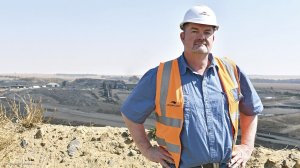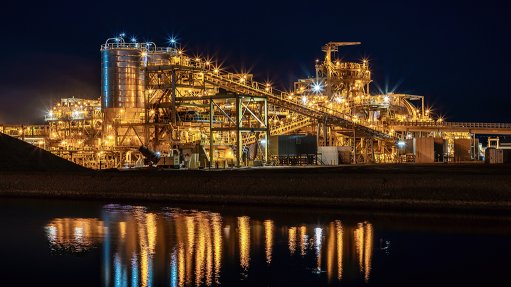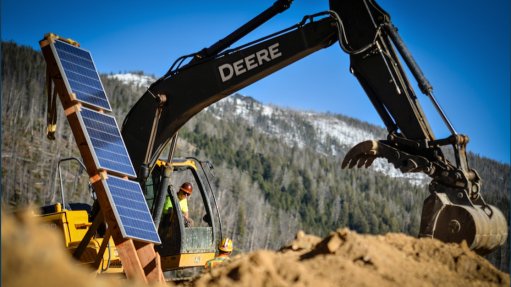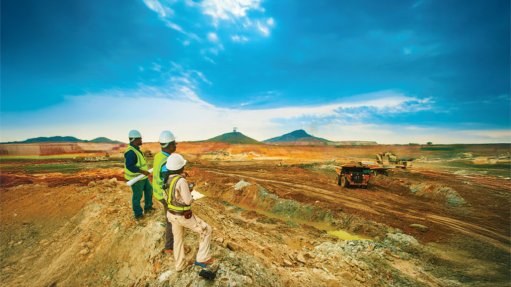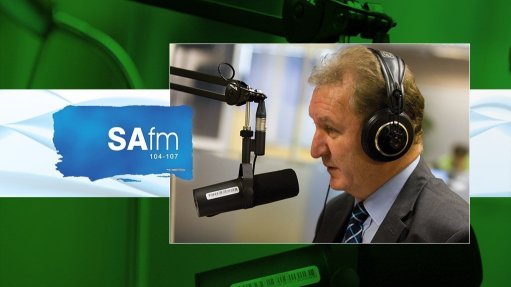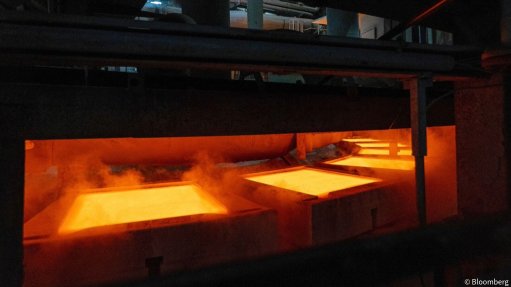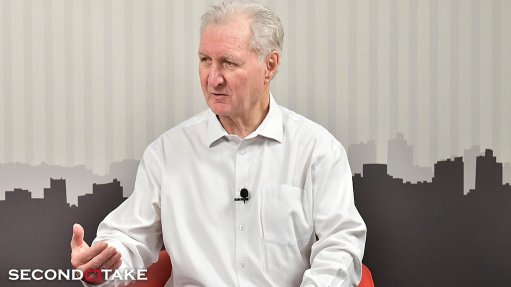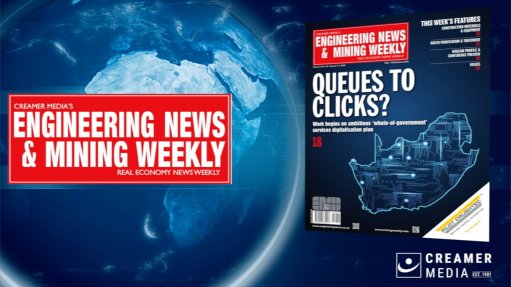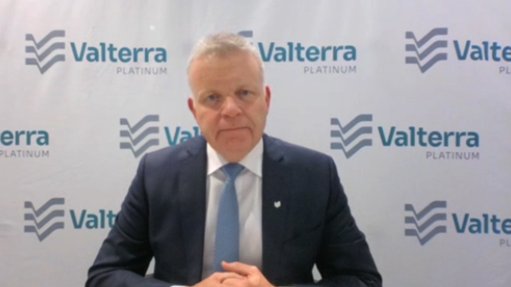Coal mine lives on

Phalanndwa colliery GM Alan Mabbett discusses the extension project. Camerawork: Nicholas Boyd and Kutlwano Matlala. Editing: Nicholas Boyd.
Coal mining company Canyon Coal’s Phalanndwa colliery extension project is expected to extend the life-of-mine (LoM) to 2027, and the company is negotiating with the relevant stakeholders to further extend the LoM by six years, Phalanndwa colliery GM Alan Mabbett tells Mining Weekly.
The original mine – located 20 km outside Delmas, in Mpumalanga – was established in 2010, with mining operations starting in 2013. Canyon Coal subsequently invested in the development of the extension project when the original resource was near depletion, adding 90 ha of land to the existing colliery’s footprint to maintain the mine’s output of about 120 000 t a month of run-of-mine thermal coal.
“The extension has much better quality coal than the original pit, especially in the main seam. Sometimes the raw calorific value is as high as 24.5 MJ/kg,” he mentions.
Mabbett adds that further negotiations with rights holders could provide access to another potential coal resource of about two-million tonnes, directly north of the original pit’s highwall.
The original pit is still yielding coal, even though geological information indicates that it should have run out by the end of 2018.
“Whatever we are getting out of that pit now is a bonus,” quips Mabbett.
For this reason, and because of the potential resource beyond the Northern highwall, the original pit has yet to undergo any kind of rehabilitation.
Although mining continues at the original pit, the primary focus of the Phalanndwa operation is the extension project. Mining started at the extension project following the first large-scale blasting of coal ore in July.
The extension project comprises one pit comprising the Two Upper seam, which is about 0.7 m thick; the Two Main seam, which is about 3.5 m to 4 m thick; and the Two Lower seam, which ranges from 1.5 m to 5.2 m in thickness. All coal produced is to be washed according to RB3 specification at a 300 t/h on-site washing plant, operated by mineral processing company Ingwenya Mineral Processing.
The washed coal product is trucked to the Kendal siding, in Mpumalanga, where after it is transported by rail to Richards Bay, in KwaZulu-Natal, for export to countries such as India, Pakistan and South-East Asian countries.
Meanwhile, Phalanndwa colliery continues to employ about 310 people – two-thirds of whom are contractors. The number of employees is likely to increase to 360 once production has peaked to the required levels of about 125 000 t/m by the end of 2019.
Additional project infrastructure includes the excavation of the colliery’s pollution control dam, which has been completed, with the lining installation expected this month. A 5 km pipeline is also planned to feed water from the pollution control dam to the washing plant.
The construction of an access road to the mine is also planned, which will shorten the trucking route to the Kendal siding by about 12 km, saving the operation about R1-million a month, says Mabbett.
The access roads, drainage systems and some other civils work has been outsourced to the local community.
Notwithstanding the current difficulties plaguing the coal market, Canyon Coal executive chairperson Vuslat Bayoglu remains positive.
“Despite the negativity about coal, we will continue to invest in the resource. It’s our comparative advantage as a country. We must mine it, use it to generate energy, create jobs and generate much-needed export earnings,” he says.
Comments
Press Office
Announcements
What's On
Subscribe to improve your user experience...
Option 1 (equivalent of R125 a month):
Receive a weekly copy of Creamer Media's Engineering News & Mining Weekly magazine
(print copy for those in South Africa and e-magazine for those outside of South Africa)
Receive daily email newsletters
Access to full search results
Access archive of magazine back copies
Access to Projects in Progress
Access to ONE Research Report of your choice in PDF format
Option 2 (equivalent of R375 a month):
All benefits from Option 1
PLUS
Access to Creamer Media's Research Channel Africa for ALL Research Reports, in PDF format, on various industrial and mining sectors
including Electricity; Water; Energy Transition; Hydrogen; Roads, Rail and Ports; Coal; Gold; Platinum; Battery Metals; etc.
Already a subscriber?
Forgotten your password?
Receive weekly copy of Creamer Media's Engineering News & Mining Weekly magazine (print copy for those in South Africa and e-magazine for those outside of South Africa)
➕
Recieve daily email newsletters
➕
Access to full search results
➕
Access archive of magazine back copies
➕
Access to Projects in Progress
➕
Access to ONE Research Report of your choice in PDF format
RESEARCH CHANNEL AFRICA
R4500 (equivalent of R375 a month)
SUBSCRIBEAll benefits from Option 1
➕
Access to Creamer Media's Research Channel Africa for ALL Research Reports on various industrial and mining sectors, in PDF format, including on:
Electricity
➕
Water
➕
Energy Transition
➕
Hydrogen
➕
Roads, Rail and Ports
➕
Coal
➕
Gold
➕
Platinum
➕
Battery Metals
➕
etc.
Receive all benefits from Option 1 or Option 2 delivered to numerous people at your company
➕
Multiple User names and Passwords for simultaneous log-ins
➕
Intranet integration access to all in your organisation


